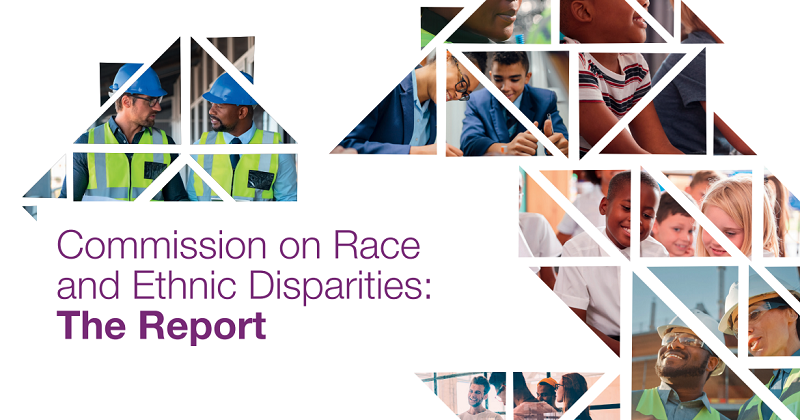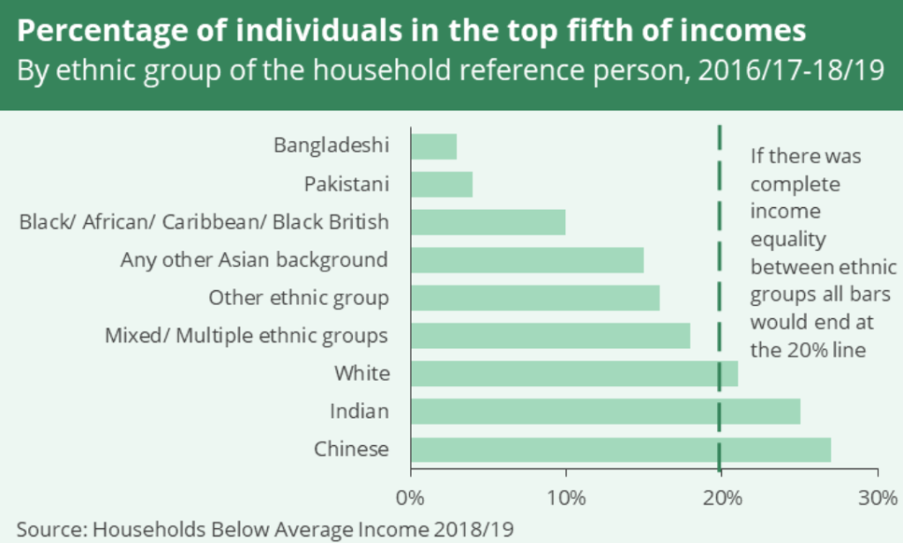Why It Is Good That the BAME Term Has Been Scrapped - Dr Sanghamitra Bandyopadhyay
Dr Sanghamitra Bandyopadhyay outlines why, from her perspective, it is good that the Commission on Race and Ethnic Disparities has announced the scrapping of the BAME term from UK public discourse.

Cover of the report from the Commission on Race and Ethnic Disparities.
Was Benjamin Disraeli Britain’s first BAME (Black, Asian and Minority Ethnic) Prime Minister? Clearly not, as British Jews are not understood to be BAME, despite being ethnic minorities and comprising less than 0.5% of the British population. British Jews are also some of the largest individual contributors to the UK’s GDP.
This paradox is also evident when one identifies Rishi Sunak, Priti Patel, and Suella Braverman as BAME. As British Indians, they too are ethnic minorities, constituting just over 2% of the British population, but they don’t exactly constitute a portrait of economic or social deprivation. Neither do Britons such as Cush Jumbo, Konnie Huq, Kazuo Ishiguro, Vanessa Mae, David Oyelowo, Jasminder Singh or Gok Wan.
Of course, the term BAME is all about describing economic and social disadvantage. Yet a cursory look at the current statistics for UK’s income distribution by ethnic group has some interesting findings. By recent statistics, British Chinese have the highest incomes, followed by Indians and whites. By contrast, British Bangladeshis, Pakistanis and Black/Caribbean/African and Black British are least represented in the top-earning quintile. The findings are reversed when we examine the bottom two quintiles, where British Bangladeshis, Pakistanis and Black/Caribbean/African and Black British occupy much of the bottom of the UK income distribution. Thus, all British ethnic minorities are not disadvantaged as the term BAME can suggest.

Source: UK Parliament document ‘Income inequality by ethnic group’, 2020, Commons Library, https://commonslibrary.parliament.uk/income-inequality-by-ethnic-group/
The UK’s wealth inequality has yet another harsh story to tell. While the median white British and Indian household in the last decade was worth £282,000 and £266,000 respectively, the median black Caribbean household was only worth £89,000. Black African and Bangladeshi households had the lowest household net worth of just £24,000 and £22,000 respectively. These wealth inequality statistics are partly explained by age (as the white British and Indian households are older), but they are also indicative of historical deprivation in education and access to good jobs. Lower incomes mean lower saving rates and thus fewer assets.
The incidence of social disadvantage in Britain also varies greatly by region. The majority of ethnic minority poverty in the UK is concentrated in inner-city London, whereas ethnic variations in poverty are remarkably less pronounced outside London. That being said, Britain’s ethnic groups deserve extraordinary attention due to such disadvantages, but how should we identify these groups of individuals?
There are tried and tested means of identifying people who are disadvantaged and poor. Indeed, Frederick Engels in his 1845 treatise, the Conditions of the Working Class in England in 1844 succinctly sums up what it means to be economically vulnerable: “He knows that, though he may have the means of living to-day, it is very uncertain whether he shall to-morrow.” Economic and social disadvantage has no regard for ethnic or national borders if the preconditions for precariousness are met – namely, low levels of education, poor access to jobs and regional poverty.
When media commentators, organisations and policymakers wish to identify groups of Britons who are subject to economic and social deprivation, they can turn to a rich body of economic literature which describes how to count the disadvantaged. The recent Deaton Review (2020) measuring the unequal impact of Covid-19 on ethnic minorities in the UK sets a fine example of how policymakers can identify specific ethnic minority groups disadvantaged by economic downturns, and thus can devise policies that mitigate the effects of the shock.
There is thus no a priori reason for poorly conceived definitions of disadvantage such as BAME. It neither serves the purpose for accurately counting the disadvantaged, nor is it able to correctly identify ethnic groups who are truly disadvantaged, and it certainly serves no purpose to devise policies that support these individuals. A further downside of using broad acronyms such as BAME is that Britain’s disadvantaged ethnic groups are likely to change over time. Afro-Caribbean/African, Pakistani and Bangladeshi communities may cease to be economically disadvantaged in the near future, and others may take their place.
The ill-defined categorisation of disadvantaged Britons as BAME has unfortunately imposed an unwanted, meaningless and incorrect identity on a large group of very different people. It has wedged a divide between whites and non-whites, and the haves and have-nots. For these reasons, it is good that the Commission on Race and Ethnic Disparities has announced the scrapping of the BAME term from public discourse in the UK.
Sanghamitra Bandyopadhyay is Deputy Director of the Centre for Globalisation Research and Reader in Economics at Queen Mary University of London. She is also the lead for the UK-wide research group, Research Circle for the Study of Inequality and Poverty.
This piece was originally published by the Centre for Globalisation Research Blog by the School of Business and Management at Queen Mary University of London.
Note: This article gives the views of the author, and not the position of the Mile End Institute or Queen Mary University of London.